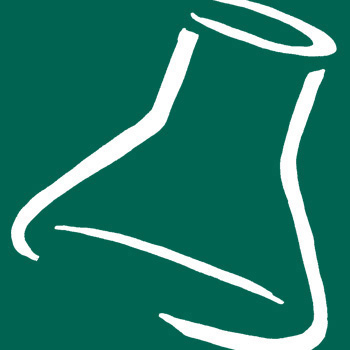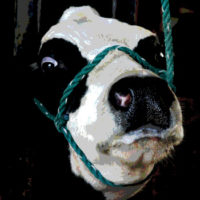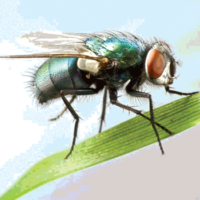BSE in the USA Redux: How Mad Are We Getting?

On May 16, 2003, the Canadian Food Inspection Agency (CFIA) announced that a six-year-old cow slaughtered in January 2003 was diagnosed positive for bovine spongiform encephalopathy (BSE), or “mad cow disease.” The reaction to the single Canadian BSE case closed the Canadian borders to exports and crushed the Canadian beef industry. In my previous article (“BSE in the USA: How Mad Can We Get?”, Food Safety Magazine, August/September 2003) the history of transmissible spongiform encephalopathies (TSEs) in food animals was discussed and the Canadian case placed in perspective. The following U.S. responses were suggested as appropriate:
1. Test all animals for BSE at slaughter that are older than five years, and exclude them from the food supply.
2. The specified risk materials (SRMs), or brain, eyes, spinal cord, small intestine, tonsils, and so on, and advanced meat recovery (AMR) from cattle older than 30 months should be excluded from the food supply. (AMR is a technology that enables processors to remove remaining muscle tissue from beef carcasses without breaking bones. Government inspectors are authorized to take regulatory samples of AMR product if they believe that an establishment is not completely removing spinal cord tissue. Spinal cord tissue is not allowed in meat and the existing sampling program requires inspectors to test AMR product on a routine basis to verify that spinal cord tissue is not present.)
3. All “risk” (i.e., non-ambulatory) animals should be tested for BSE.
4. A system of positive identification tracking should be implemented.
5. The U.S. Department of Agriculture (USDA) budget for TSE research should be substantially increased.
6. All deer and elk should be excluded from the food supply.
Unfortunately, little action took place in the U.S., other than a number of news conferences and wrangling with Far Eastern export trade customers. That all changed on Dec. 23, 2003, when Agriculture Secretary Ann Veneman announced the discovery of the first U.S. BSE case from a farm in Washington State.
Madness Strikes
The cow slaughtered in Washington State was confirmed as the first U.S. BSE-positive animal. Luckily, the SRMs were removed from the cow at slaughter because it was selected for evaluation by the USDA veterinarian. All meat from the carcass has been subsequently recalled, and all cohort animals and offspring are being culled for eradication and testing.
By early January the cow was identified definitively by DNA testing and identification tag tracking as a six-and-a-half-year-old animal shipped from a farm in Alberta, Canada. Within days of the BSE-positive cow’s discovery, American meat exports disappeared and cattle futures plummeted by 30%. Domestic consumption has as yet remain un-changed, showing consumers believe the problem contained to the Northwestern states close to the Canadian border.
Tracing the U.S. “mad cow” case back Canada has tagged it with two confirmed BSE cases in their smaller national herd of 10 million or so animals. Both animals implicated the province of Alberta, the heart of the Canadian live cattle industry. Unfortunately for Canadians, the government there had expended little effort to substantially increase surveillance for BSE, so foreign customers are unlikely to be reassured as to the safety of the Canadian national cattle herd after the discovery of a second BSE-positive animal.
What Happens Now?
USDA’s Food Safety and Inspection Service (FSIS) immediately announced implementation of their BSE disaster plan via changes in federal regulations. These changes include:
1. All seriously crippled and non-ambulatory-disabled cattle (including “downer” animals) will be labeled as “U.S. Suspect” and excluded from the human food supply.
2. SRMs are defined and excluded from the human food supply.
3. AMR will not be performed on spines of animals older than 30 months.
4. Mechanically-separated beef is no longer suitable for human food.
5. Air-injection bolt stunners are now forbidden in slaughter.
6. Meat from sampled suspect animals will now be retained until a negative test result is received.
USDA’s Animal and Plant Health Inspection Service (APHIS) also announced a new surveillance plan with some increased testing (up to 58,000 animals per year), but this must be redesigned and implemented in a new way. Up to December, APHIS collected central nervous system (CNS) tissue samples from slaughterers of “downer” cattle. Most of these samples were collected from small-sized slaughtering operations because the large ones don’t accept unhealthy animals. APHIS analyzes the samples for BSE prion material by both the “Western blot” technique, similar to SDS-PAGE, and by a biochemical enzyme-linked immunosorbent assay (ELISA) method. APHIS has been criticized for using primarily the “Western blot” technique, which can take up to 14 days to get results, instead of the more rapid ELISA test kits used in the European Union (EU). The principal reason for APHIS’ choice has been to avoid false-positive results in a surveillance plan that expected none in its design.
FSIS’s changes mean that “downer” cattle will no longer be readily available for selection for BSE testing. With the new rules, these animals will likely be killed and buried on-farm or sent directly to rendering facilities. APHIS will now have to figure out the means by which to see these animals and sample them for surveillance testing. APHIS has suggested it will work with renderers and veterinarians to obtain samples, but this will take time to work out and is fraught with a number of practical difficulties. Until this happens, the USDA’s BSE surveillance plan is no longer credible. SRM is only defined for animals 30 months and older: Skulls, brains, spinal cords, eyes, and so on, from cattle younger than 30 months and that are not disabled can still be used for human food.
Assuming APHIS’s surveillance plan really involved random sampling (there are accusations from the press that selection was heavily biased), and that the surveillance cattle population of “downers” is no more than 250,000 animals in the U.S. (estimates range from 100,000 to 500,000 or more), then estimates can be made of the number of “hidden” BSE-positive animals currently present in our national herd. Further assuming that APHIS tested 20,500 “downer” cattle in fiscal 2003, we should be 95% confident the BSE incidence rate in the 250,000 risk population falls between 1:3,700 and 1:810,000. We should, therefore, also be confident the total number of BSE-positives in the risk population is less than 250,000 / 3,700 = 68 animals.
For Canada, the situation is somewhat more complex. Similar assumptions would place the incidence there as high as 1:1,100 risk animals, or about 30 in total in the risk population. However, the discovery of the U.S. case of Canadian origin may possibly suggest a higher number.
The cases in “risk” animals are typically only about one half of those existing in the entire herd, so reasonable estimates would be that there were about 140 or fewer BSE-positive animals in the U.S. herd over the last year, and 60 or so in the Canadian herd. The age of the cases found so far (i.e., greater than six years) at least supports the contention that they were initiated prior to an effective feed ban in North America.
Assuming worst-case that the variant Creutzfeldt-Jakob disease (vCJD) cases in the European Union have been entirely caused by oral ingestion of BSE-contaminated beef tissues, about one vCJD case might be expected per 1,200 BSE positives. This would mean that our current level of exposure to vCJD is about 0.1 cases in the U.S. and 0.05 cases in Canada. Therefore, the vCJD risk in North America is not yet of significant public health concern.
However, the national cattle herds should be protected in the future by the feed bans in place, and the human population will gain more protections under the new SRM regulations. Additional “good news” for the beef industry includes advances announced with respect to prion-deactivation (e.g., keratinase), which will help with rendering and waste disposal, and the possibility of live-animal BSE testing.
Testing Challenges & Developments
Now that BSE has been discovered in the U.S., even if the animal originated from Canada, prudence suggests we take some extra measures, including more targeted testing and surveillance activities:
1. Test for BSE all animals born before the 1997-1998 feed ban, whether healthy or not at slaughter.
2. Test all “downer” animals for BSE.
3. Extend the feed ban to exclude SRM materials from feed for animals (swine, poultry) that are indirectly recycled back into cattle.
4. Institute a surveillance plan for BSE-variant vCJD in the U.S., and make vCJD a reportable disease.
Testing of healthy animals at slaughter is generally political and not scientific. It is useful primarily to reassure a jittery consumer market. This does not yet seem necessary at the current time. But in terms of the increased biochemical testing proposed above, the meat industry has several post-mortem diagnostic methods at its disposal. As mentioned, there is no test available currently to detect BSE in live animals. The methods that are available involve a variety of screening techniques—histology, immunohistochemistry, mouse bioassay, Western blot, and ELISA—used to identify abnormal prion protein associated with mad cow disease in post-mortem bovine tissue samples. Like most microbiological testing, they differ primarily in terms of time to result, selectivity and specificity.
A large number of companies are now in the prion testing market, given the tens of millions of tests anticipated to be performed annually. See Stephen Dealler’s comprehensive review of the diagnostic companies developing prion tests, as well as a list of current scientific papers on the subject, are available at www.priondata.org/data/A_codiag.html.
Robert A. LaBudde, Ph.D., has been president of Least Cost Formulations, Ltd., since 1979, and has served on the faculties of several universities through the years among them the University of Wisconsin, MIT and North Carolina State. Dr. LaBudde is well known throughout the meat industry for his contributions in the areas of food safety, chemical analysis and quality control.
Looking for a reprint of this article?
From high-res PDFs to custom plaques, order your copy today!








